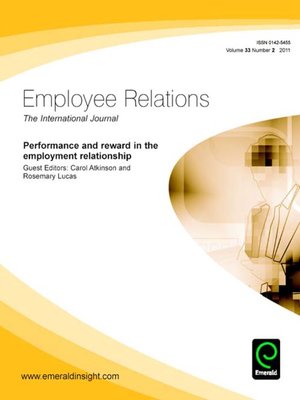
Sign up to save your library
With an OverDrive account, you can save your favorite libraries for at-a-glance information about availability. Find out more about OverDrive accounts.
Find this title in Libby, the library reading app by OverDrive.



Search for a digital library with this title
Title found at these libraries:
| Loading... |
The HRM/performance debate, i.e. the extent to which and how HRM contributes to organisational performance, continues to rage. Employee attitudes and behaviours are seen as a critical mediating variables in this, there being much debate on how HR practices affect these attitudes and, indeed, which attitudes they should seek to influence. Commitment and involvement have been identified as key to enhancing performance but recent research has suggested a need for consideration of a wider range of attitudes. Further, there has been a substantial focus on the gap between policy intentions and the reality of their enactment. This has led to calls for the examination of HR practices from an employee perspective, the investigation of their lived experiences of these practices. A number of our papers respond to this call reporting both line manager implementation of HR policies and employee perspectives on these.
Current debates on pay have centred on the extent to which individualised pay systems have superseded collectively bargained pay and the effects of this, linking payment systems to skills development, how to make performance-related pay systems work and how far they are used as control mechanisms, rather than to motivate employees and provide them with genuine enhanced earnings opportunities. There is often an over-reliance on performance related pay (PRP) to motivate, despite 20 years worth of debate and very mixed evidence on its capacity to achieve this end. This e-book addresses both reward mix and PRP in attempt to move these debates on. Finally, who gets what raises questions of fairness and social legitimacy. Nowhere is this more evident than in equal pay debates. Research evidence continues to demonstrate a gender pay gap and the search goes on for mechanisms through which to address this. Job evaluation is often held up as such a mechanism although many question its capacity to support gender pay parity. An exploration of this forms the final paper in this e-book.






